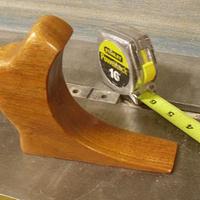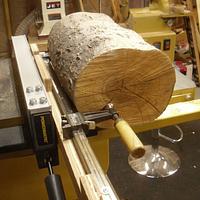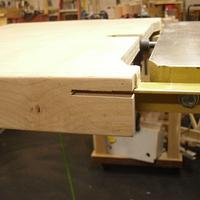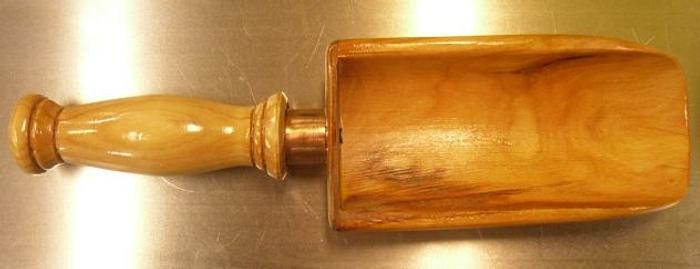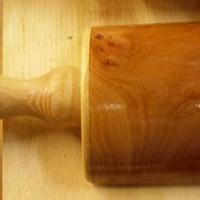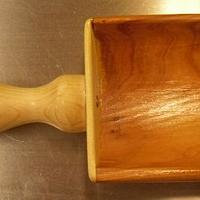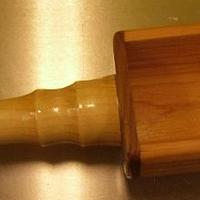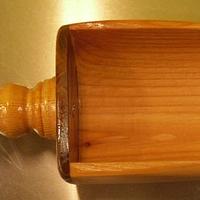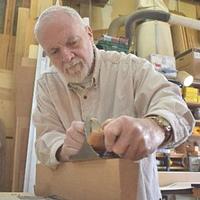Kelly
in over 11 years
More from Kelly
Kitchen Scoops
I managed to avoid even touching a lathe for nearly fifty years. Interestingly, in light of the tools and equipment that can be found in my shop, I was afraid of them. After all, what sane person would throw a piece of unbalanced wood on a device that spins it at three thousand RPM and poke it with a piece of metal with only a bit of plastic between you and it?
Add to the foregoing that it seemed everyone I talked to said they were addictive, and I have and had enough habits. Still, I threw myself on the tracks, and here we are:
1) I grabbed a couple logs of apple and cherry and sawed them to about six or eight inch lengths. for good measure, I threw in a couple blocks from an untethered four by four.
2) I cut all these into semblances of cylinders on the band saw. Then I cut these into the scoops by, for the large ones, cutting them in half, length ways and, for the short ones just cutting into the entire cylinder then cut the cylinders on end (again, standing on end).
I left about 1/4" of wood on the little scoops and about 3/8" on the larger ones.
3) I sat the hollowed out scoops on pieces of walnut or acacia and traced the scoop. Then cut the backs and glued them to the scoops. The dark wood backs contrasted nicely with the lighter scoop wood.
4) I had some two by two’s laying around from a 2×4 project and I turned handles for these. Looking at them, with finish on them, I’d be hard pressed to believe they were, essentially, big box store garbage wood.
5) I epoxied and screwed the handles to the scoops and they were good to go.
On a whim, I took a piece of 3/4" copper pipe, turned one of the handles so it would just fit on the end, and it made for a nice effect.
4 Comments
very nice
jim
impressive job
Wheaties
This “turned out” well,and you survived :))
woodworking classes, custom furniture maker
Re “This “turned out” well,and you survived :))”
Groan (aside the fact I think I just used this on a web site for off-center turning.










